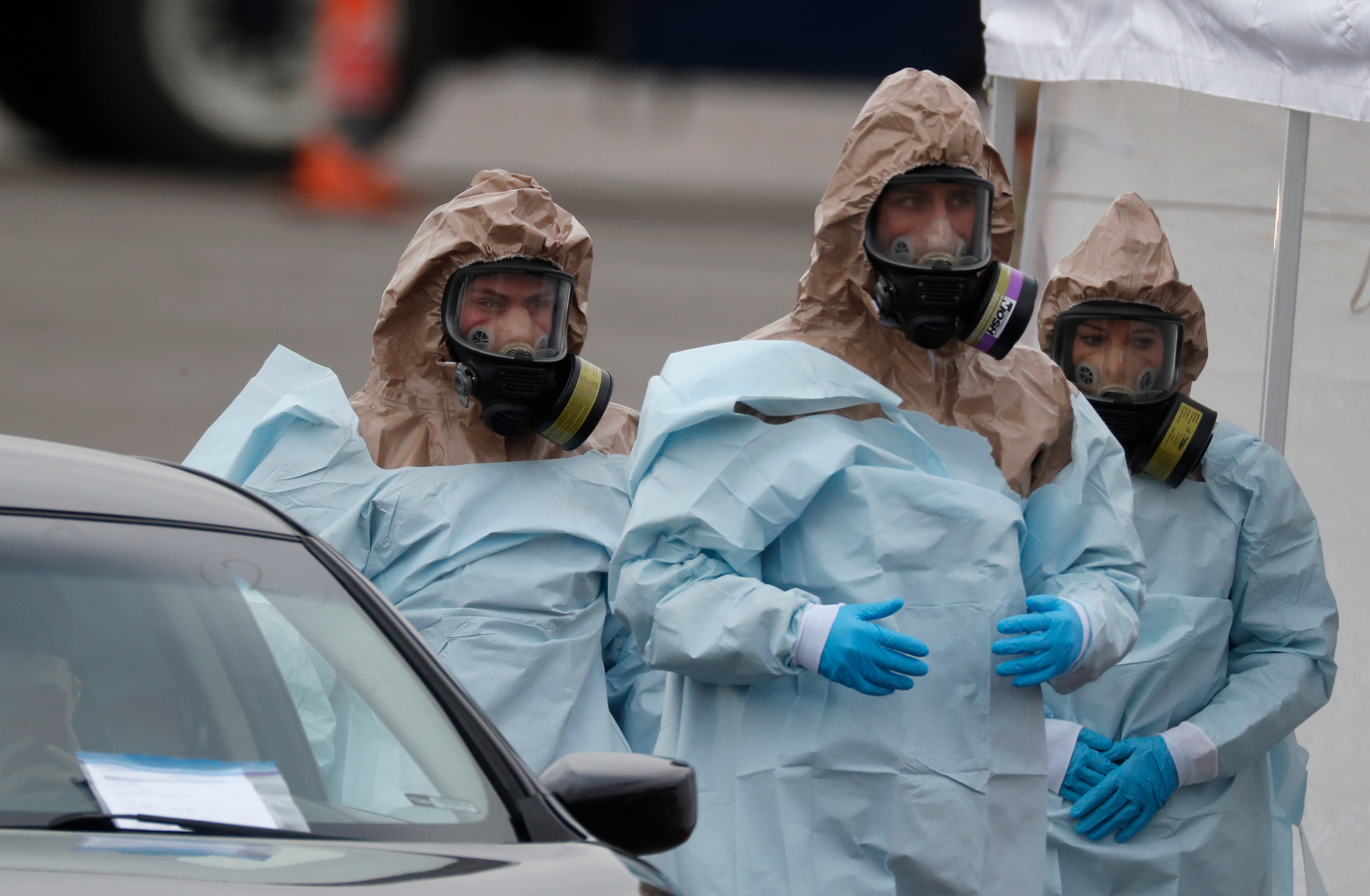As governors across the U.S. activate their National Guard units to help with coronavirus response, questions have been raised about how the military could be called in to help with relief efforts, as troops so often do in the face of natural disasters.
Former Vice President Joe Biden and Sen. Bernie Sanders, I-Vt., both suggested in a Democratic presidential debate Sunday that they would mobilize units in response, but with few details on how those troops would be employed.
“They’ve done it,” Biden said. "They have the capacity to build 500-bed hospitals that are completely safe and secure, and provide the help to get it done. It is a national emergency. I would call out the military.”
The reality of the Defense Department’s capacity is more complicated, officials told reporters Monday, though leadership is ready and willing to support in any way they’re called.
Still, both in the short- and longer-term, their capabilities are not best suited for a pandemic.
While the Army Corps of Engineers could physically whip up a large hospital and funnel patients in, the real issue is who would staff it.
“Those are the sorts of analyses weren’t going through right now to figure out what we can do,” Air Force Brig. Gen. Paul Friedrichs, the Joint Staff surgeon, said. “The challenge with that … is if you mobilize the Guard and Reserve from their civilian jobs, they’re no longer in their civilian jobs.”
Currently, many of the activated units are helping with testing locations, as in New York state, also delivering food to those too vulnerable to venture out.
So far, Pentagon spokesman Jonathan Hoffman said, DoD has not received any requests for assistance along the lines of hospital construction.
The benefits of activating those medical units will have to be weighed against the detriment of pulling doctors, nurses and other personnel out of their communities. And civilian community hospitals will be key, Friedrichs said,
“As many of you are aware, they are relatively small hospitals,” he said, referencing the 36 installation hospitals DoD operations in the U.S. "They are not thousand-bed hospitals."
They are also much more geared to the patients they’re used to treating ― that largely includes emergency injury care, labor and delivery and pediatrics.
In general, many serious illnesses and life-threatening injuries among troops are transferred out to larger regional hospital centers.
Another idea that’s been floated is field hospitals, which have been used in the past to surge capacity.
"We do have tent hospitals, Friedrichs said. “The challenge is they’re designed to take care of trauma patients and combat casualties.”
Doing triage on injuries is an entirely different environment from a clinic that needs to prevent the spread of a highly contagious airborne virus, particularly because COVID-19 patients who require hospitalization need heavy duty equipment like ventilators to keep them alive.
The military also has two hospital ships at its disposal, the USNS Mercy and Comfort, but they are also not particularly geared to stemming an outbreak.
For one, Friedrichs said, they do not have a permanent medical staff. They are crewed by civilian merchant mariners who keep them afloat, but the doctors, nurses and others on board have to be brought in from units throughout the U.S., either from installation hospitals or reserve component units.
They, too, are designed for mass casualty response, and so not conducive to isolating patients, with hospital beds stacked four high in some areas.
Since the start of the outbreak, DoD’s contribution has mostly been to support the Health and Human Services Department, Hoffman said.
That includes the bases housing quarantine cases after evacuation of U.S. personnel from Wuhan, China, as well as cruise ships affected by outbreaks and disembarked directly into quarantine.
Meghann Myers is the Pentagon bureau chief at Military Times. She covers operations, policy, personnel, leadership and other issues affecting service members.




